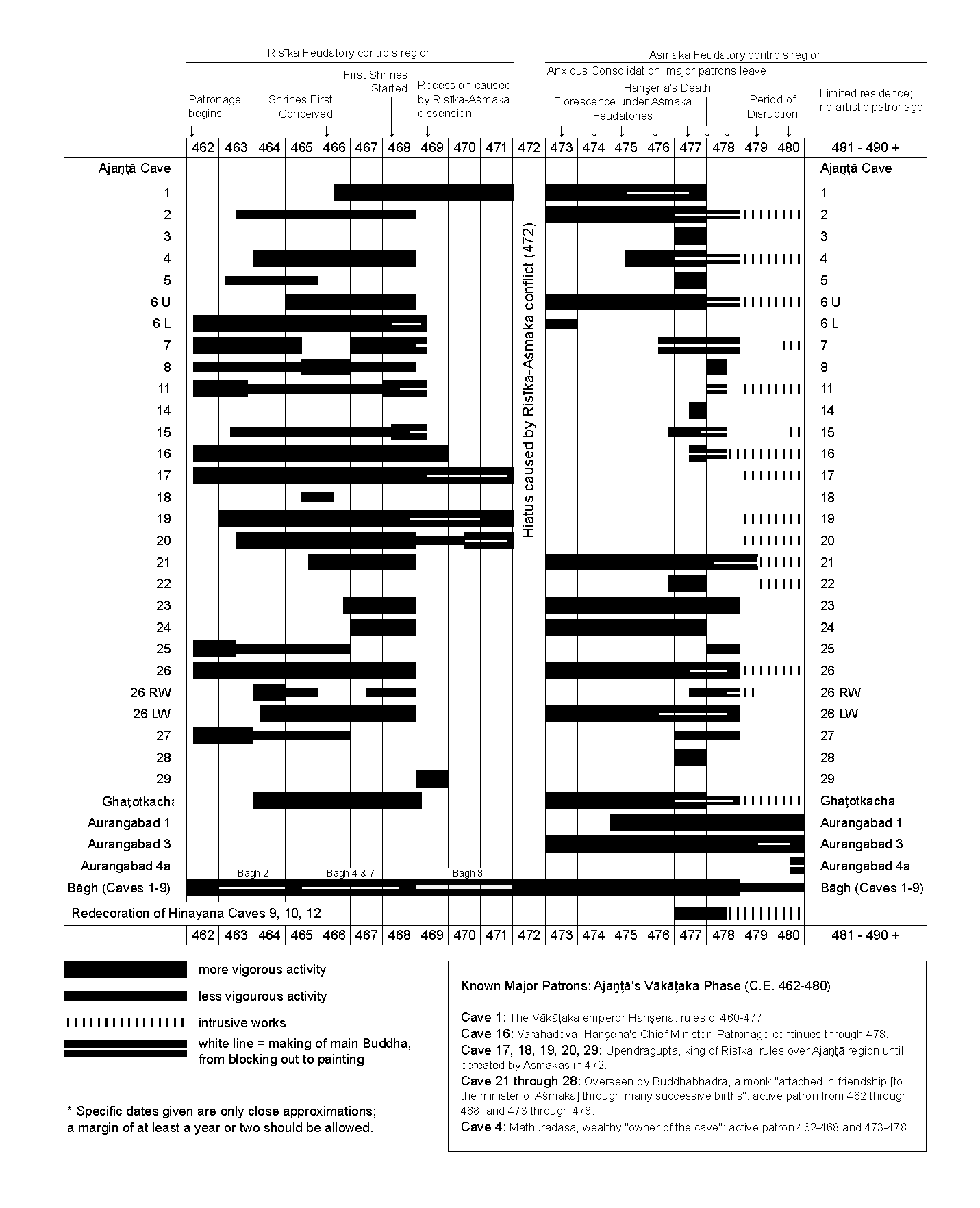Periodisation
A recent proposal introduces a novel periodisation system for Ajanta, aiming to accurately capture the site’s varied historical trajectory.1 This system delineates distinct phases of development and intervals of dormancy, providing a comprehensive framework for examining the dynamics behind periods of activity and stagnation.
Period I
Initial excavations at Ajanta, including Caves 9, 10, 12, 13, 30, and 31, occurred from the late 3rd century BCE to the 1st century CE. The subsequent structures were realized in the late 5th century CE, marking later phases.
Periods II, III, and IV
Spink’s chronology
Walter M. Spink, a preeminent scholar in the study of Ajanta, has made indelible contributions over six decades of dedicated research. His evolving time chart, commonly referred to as “Spink’s chronology” or “short chronology,” challenges and refines the protracted timelines previously ascribed to the caves’ development.
Contrary to earlier views that spread the caves’ creation over several centuries, Spink’s analysis provides a concise temporal framework, enhancing our understanding of the site’s excavation and artistic evolution. Below is one of the most updated iterations of his chronology.

- Singh, Rajesh Kumar. 2020. Periodisation of Rock-Cut Monuments of India (Baroda: Hari Sena Press). ↩︎
